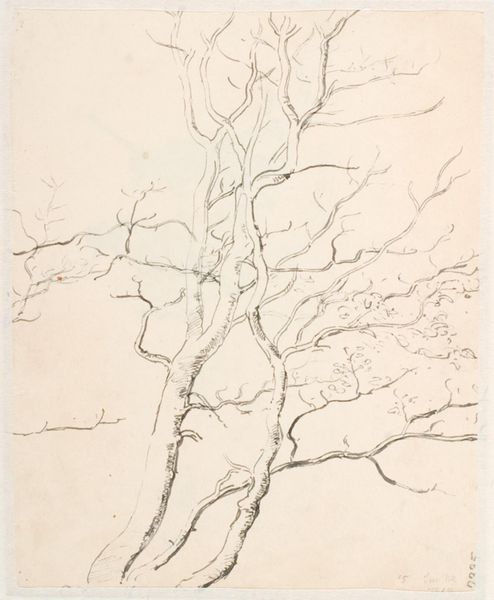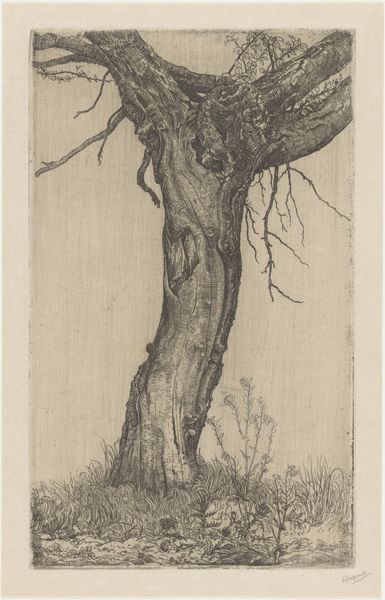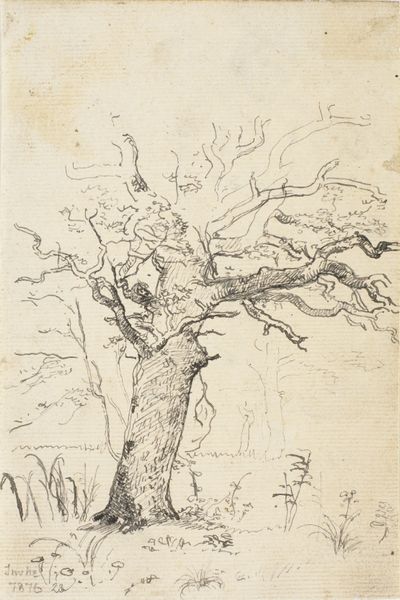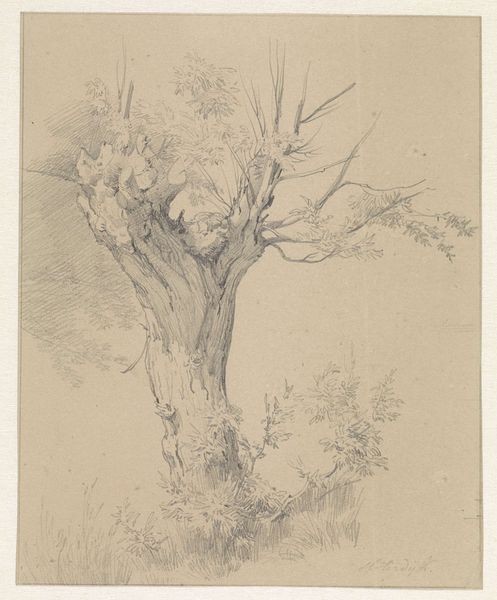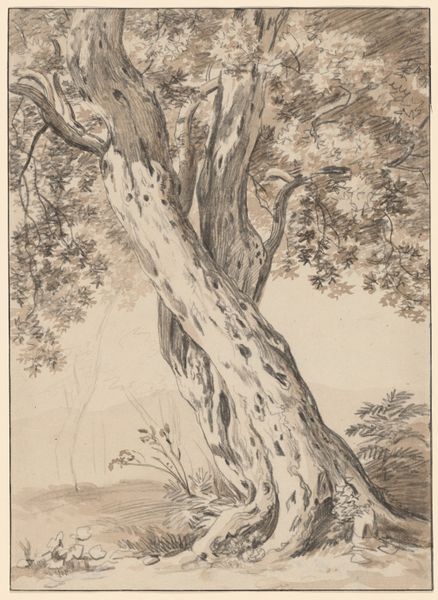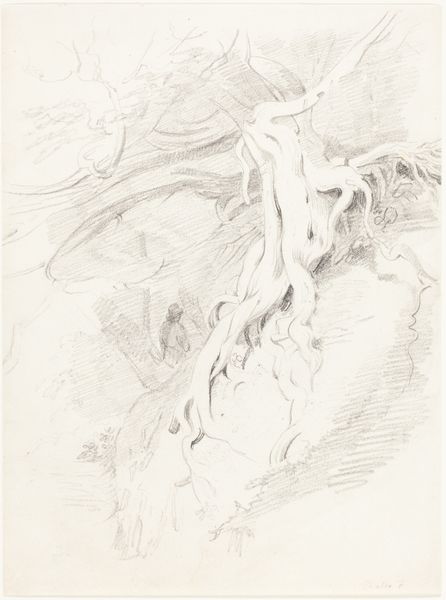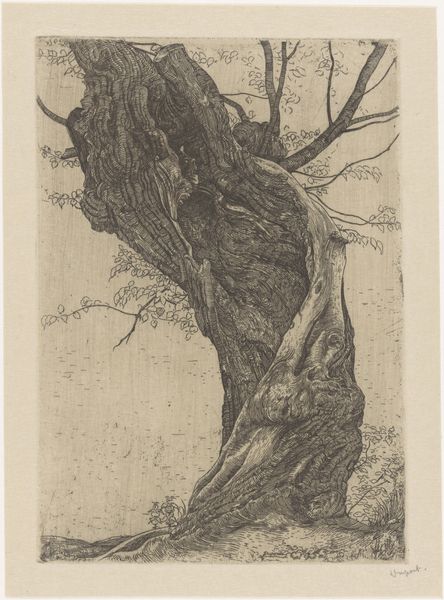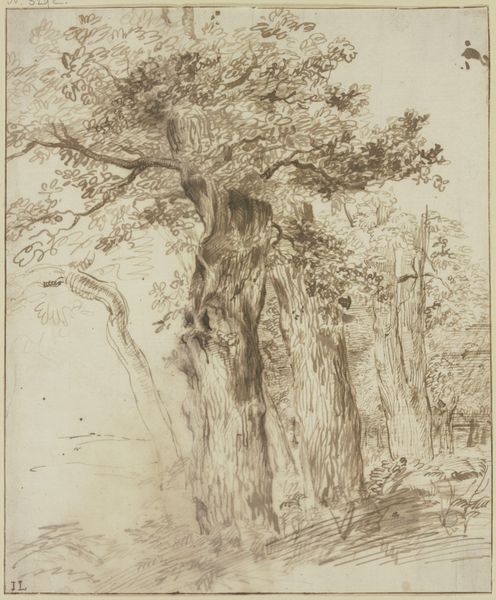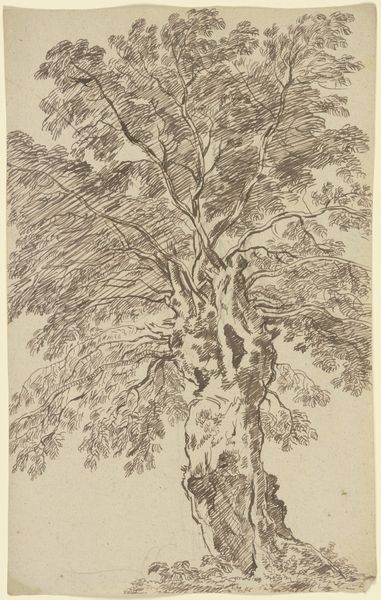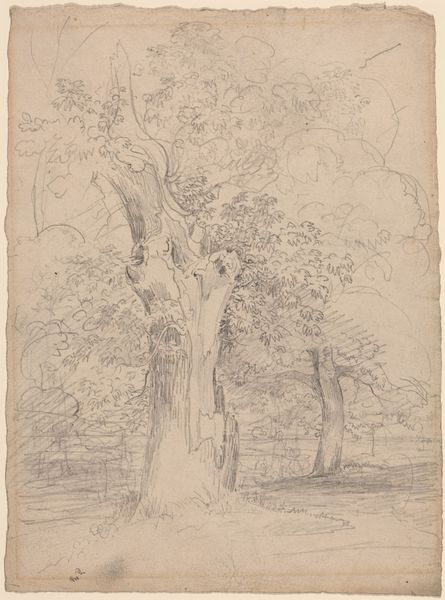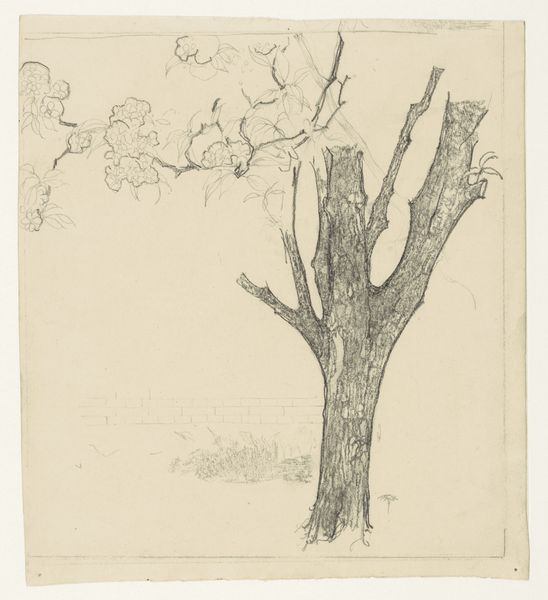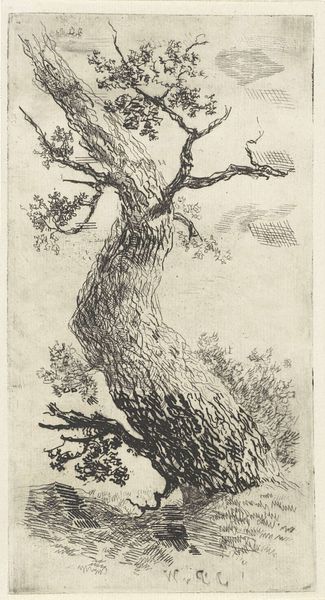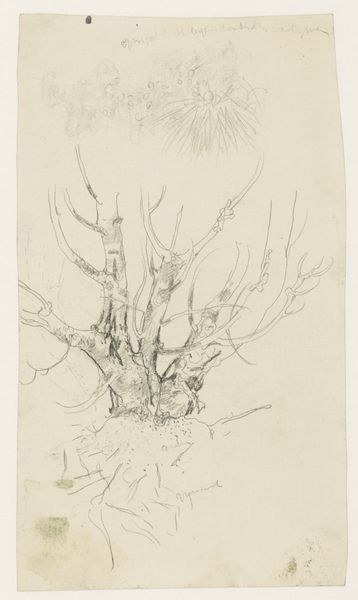
drawing, pencil
#
drawing
#
ink drawing
#
landscape
#
pencil
#
line
#
realism
Dimensions: height 344 mm, width 236 mm
Copyright: Rijks Museum: Open Domain
Curator: This drawing, rendered in pencil and ink, is titled “Boomstudie, te Vogelenzang.” The artist is Simon Moulijn, and the date assigned to it is 1925 to 1926. Editor: Striking. The tree seems to struggle, reaching out with arthritic limbs. I find it simultaneously unsettling and deeply familiar. It makes me think about endurance, but also precarity. Curator: It's fascinating to consider that Moulijn likely created this en plein air. What materials would he have carried? What considerations did he have to take into account? One envisions Moulijn carefully selecting his paper, pencils, and inks for their portability and archival qualities. What was available to an artist in that period, and where might Moulijn have procured it? The drawing embodies the physicality of landscape, reflecting Moulijn’s own labor and embodied experience. Editor: And Vogelenzang itself... that location shaped Moulijn's subject. Think about its socio-economic conditions during the interwar years. It becomes less about idealized nature and more about understanding how humans shaped the environment around them. Consider this work alongside others from that period depicting nature in industry or agricultural scenes. Was it common to see depictions of aging, struggling trees? What might it have said about Vogelenzang, the people living there, and the Dutch Republic in general during those difficult interwar years? Curator: True. By choosing this gnarled tree as a subject, Moulijn invites us to contemplate themes beyond picturesque beauty, pointing perhaps towards an embrace of imperfect materials and natural forms. The tree almost serves as a kind of found object. But, it is transformed by Moulijn’s hand through close observation and mark making. Editor: Right, the marks translate an observed reality into a commentary. The choice to capture *this* particular subject in this specific way invites conversation about societal shifts, environmental changes, and the public perception and function of art at that moment in history. What political leanings might an artist capturing an "unpretty" tree represent at the time? Was this work viewed differently in public than if it was kept in private hands? Curator: It’s thought-provoking to connect a simple drawing to larger cultural shifts and anxieties around labor and industry. It shifts my perspective entirely. Editor: Mine too! I leave with an invitation to see all art through a socio-political lens, ever mindful of whose story is and isn't being told.
Comments
No comments
Be the first to comment and join the conversation on the ultimate creative platform.
